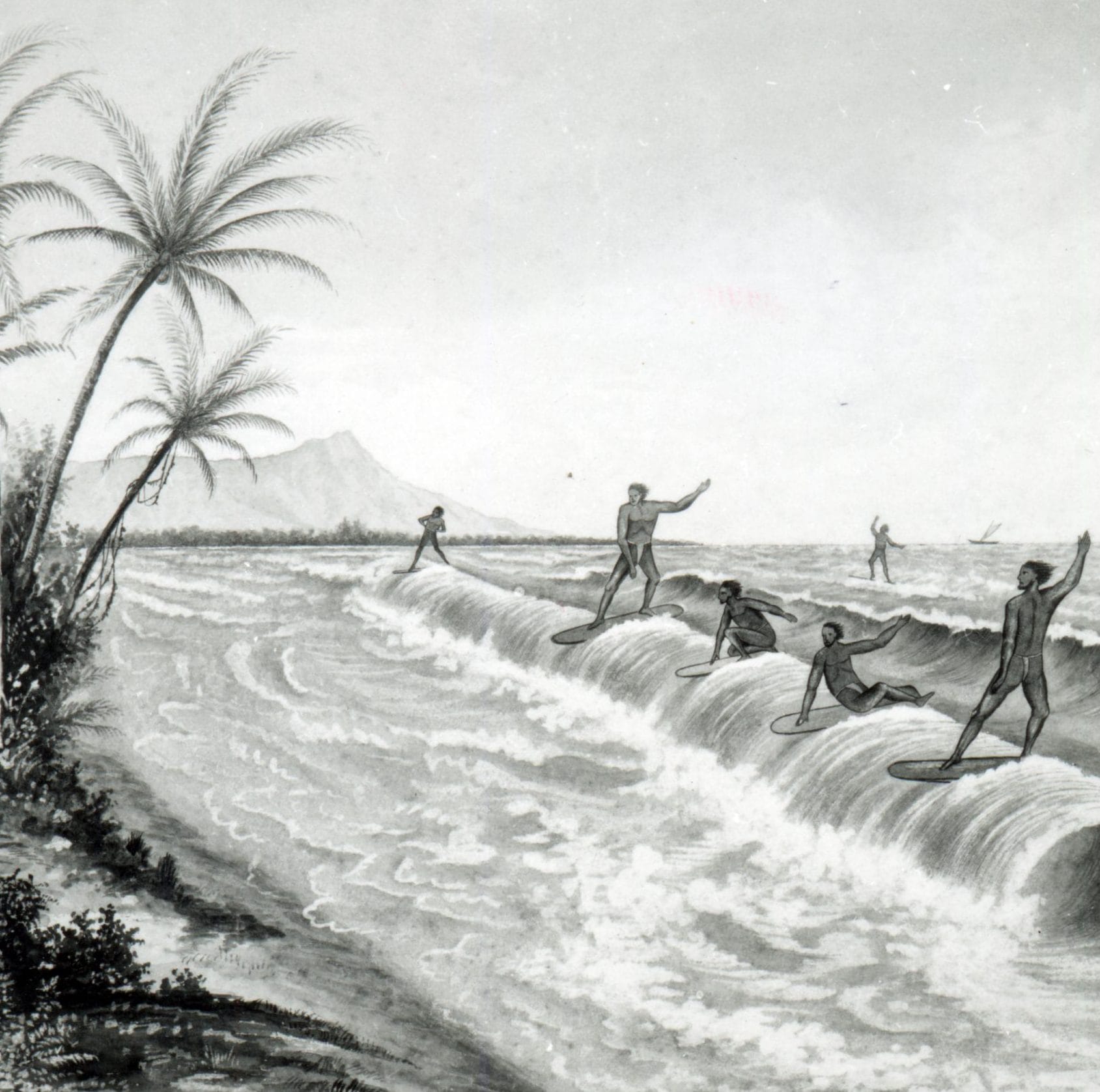


Why Kipapa?
Kipapa means “pavement” in Hawaiian: at Kipapa, we aim to build a pavement for people who want to get to a better life.
Also… “kipapa” was slang amongst the original Hawaiian surfers for a way of surfing gracefully! We want to help people ride the waves of life in style! Here’s how they put it in 1896:
“In riding with the olo or thick board, on a big surf, the board is pointed landward and the rider, mounting it, paddles with his hands and impels with his feet to give the board a forward movement, and when it receives the momentum of the surf and begins to rush downward, the skilled rider will guide his course straight, or obliquely, apparently at will, according to the spending character of the surf ridden, to land himself high and dry on the beach, or dismount on nearing it, as he may elect.
This style was called kipapa.“
Anonymous: “Hawaiian Surf-riding.” Thrum, Thomas G. (editor) : Thrum’s Hawaiian Almanac and Annual for 1896. Honolulu, 1896, page 110.
Jeremy Slaughter, Founder

Hi! I’m Jeremy, and I started Kipapa. I’m now a Psychologist, but took me a long time and several “wrong turns” to find my vocation in Psychology: I left Durham University in 1983 with a degree in Economics and Politics. Then I worked in accounting, market research, auctioneering, careers guidance and occupational psychology, before training in Clinical Psychology. I (finally) got my Doctorate in 2000. So, was it worth spending 17 years to get there? Well…I learned a lot, and I’d be miserable now if I hadn’t made that journey, so…yes. But, if I’d known then what I know now, I’d have got there a lot quicker! That’s why I’m so keen to help others get where they want to go in life, faster.
Why did my personal journey take so long? Because the personal development process as we know it is so inefficient! I started with self-help books, which introduced me to Transactional Analysis psychotherapy, but that didn’t solve all my problems, so in turn, I tried Jungian analysis, Personal Construct Therapy, Psychodrama, Cognitive Behavioural Therapy, Existential Therapy, Rogerian counselling and Freudian analysis. Each hooked me with a promise of a better perspective or a deeper process, but each approach maps only part of the Mind, so each became irrelevant when I encountered a new issue. I couldn’t see how these different psychotherapies joined up. I couldn’t be sure when I was making progress or when I was just wandering around in my own head with a therapist. But it seemed like I was just supposed to keep going until I got bored! That felt unacceptable, but I had made enough progress by 1987 to believe that I could make the most of my life, for myself and for others, by doing personal development work.
But then, I thought, if I made personal development my profession, I can help myself and others at the same time. So, I went back to (night) school and got a Degree in Psychology and a Masters in Occupational Psychology at Birkbeck College, London, then managed to get into a fabulous NHS training course in Clinical Psychology, and completed my doctorate at University College London in 2000.
Now I had qualified, but shockingly, after 10 years of further education I still had no idea how Psychology joined up! Instead, I had learned that Psychologists, Psychotherapists, Psychiatrists, Counsellors and Coaches divide into 12 quarrelsome factions, each faction with its own map of the mind and its own therapies, making over 800 therapies in total. But I passionately wanted to put all those maps together to explore the whole range of human problems. And that was going to be difficult from inside the NHS: understandably, they have rules about how you spend your time…
While pondering the dilemma of whether to leave the NHS, I’d noticed a possible solution to the problem of therapy integration: I saw that every faction in Psychology uses the same metaphors about journeying or building, and I had read that abstract theories are often built on everyday metaphors. So I reasoned that common “Journey-building” metaphors could connect theories from every faction of Psychology. And if every faction talked of journeying and building, all must have “maps” or “plans” of their journeys and buildings based on those metaphors. Maps and plans share common dimensions. Some dimensions, like time, are obvious (time in the West runs from left to right on the page), others are less obvious. I wanted to find them!
So I left the NHS in 2008 to develop JourneyBuilding®, to find those dimensions and to plot psychological terms on them. Next, with the help of a software developer, I created a map of Psychology in software (PsycNav®), which could turn my session notes with clients into a map of each client’s life. I could then use that map to help my clients better. For the past few years I’ve been developing PsycNav® and JourneyBuilding® whilst running this private practice.
How do the PsycNav® map and JourneyBuilding® process help? As you may imagine, therapy and coaching can be almost as confusing for the therapist or coach as for the client! Any client can change the situation, goals and problems they talk about, from week to week. So any therapist or coach can be tempted to become just an attendant: listening to the client’s weekly complaints, following the client’s life story and commenting on the latest hole the client has fallen into.
The PsycNav® map allows me to do more than just listen and comment. I now see where different therapies can help with different problems. And the JourneyBuilding® process helps me sense where clients are as well as where they need to go, then describe it to them in a way we both find fun. These tools help me remember what the client has said, to understand where the client is right now, and to keep my sense of direction, so I can be more helpful. I believe they make clients’ personal development journeys shorter, more purposeful, more effective and more meaningful. And as PsycNav® and JourneyBuilding® learn more about problems and solutions, I feel sure they’ll become even more helpful in future!